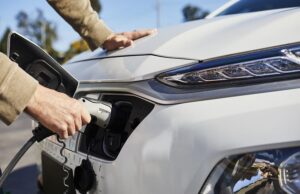160 years after the invention of the rechargeable lead-acid battery by the French physicist Gaston Planté, technologies aimed at storing energy electrochemically have made immense progress. All scientific work converges towards the same common objective: to find the best possible compromise between the weight of the battery, its storage capacity , its cost price, its lifespan, its ability to recharge and its environmental footprint, in particular at the time of use. recycling . _
lead acid battery
Invented in 1859, the lead battery still finds its place in many vehicles, thermal as well as electric. In 1899, the electric vehicle “La Toujours contente” equipped with this technology was the first automobile to exceed 100 km/h, well before internal combustion vehicles.
Nowadays, lead batteries are no longer used for traction: they supply the electrical circuit of accessories or equipment specific to the thermal world such as the starter. The lead-acid battery offers only a limited capacity despite its size and high weight, but it has the merit of being both economical and simple to produce or recycle. Used as the main storage device for electric cars until the 1980s, it quickly gave way to other more efficient technologies.
Nickel-Cadmium battery
If you used rechargeable batteries in the 90s, you know Nickel-Cadmium technology. “Ni – Cd” accumulators did not lack advantages, with a high storage density and a lifespan of the order of 500 to 1,000 recharge cycles.
On the other hand, they suffered from the memory effect, a physical phenomenon which alters the performance of the battery in the event of partial “charge-discharge” cycles.
Nickel-Metal Hydride Battery
With their performance comparable to that of Ni-Cd technology, Nickel-Metal Hydride or “Ni-MH” batteries have enjoyed more lasting success due to the absence of heavy metals. This portable rechargeable battery technology was the most economical in the early 2000s: this is why it largely dominated the hybrid vehicle market until the advent of lithium-ion technology.
Li-ion battery
Developed in the early 1990s, the lithium-ion battery has gradually imposed itself as the reference technology, in the world of transport as well as in that of consumer electronics. Endowed with a long lifespan, it offers a much higher energy density than that of all competing technologies and has no memory effect.
On the other hand, it requires suitable conditioning as well as precise control of the recharge, generally ensured by a dedicated electronic circuit. Renault uses lithium-ion technology for ZOE and the other electric vehicles in its range. The Group is also working on integrating its batteries into a circular economy scheme aimed at extending their lifespan as much as possible.
All solid battery
Scientific research has always been interested in the all-solid-state battery concept , but it has only been 10 years since its advances make it possible to imagine, in the distant future, its adoption in the automotive world.
Its principle consists in replacing the liquid electrolyte of the batteries by a solid material which could take the form of a plastic polymer, compacted inorganic powders or a mixture of the two. In theory, the technology has only advantages: it allows to increase energy density and stability while simplifying thermal management. The solid-state battery, however, is only at the laboratory prototype stage. The lithium-ion battery therefore still has a bright future ahead of it!


